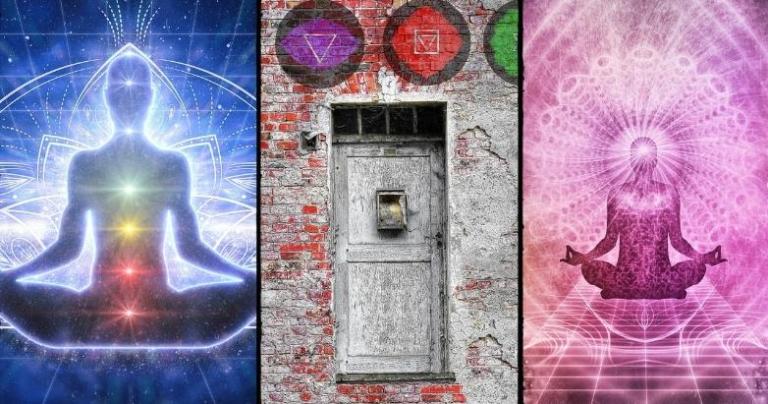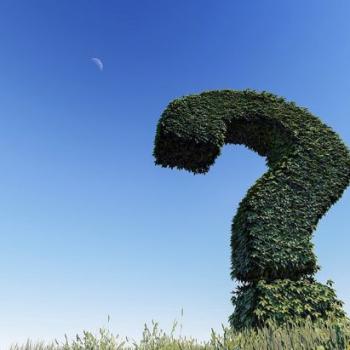
Changing the spatial relationship with the chakra system can alter interpretations dramatically. Unlike some people, I don’t see the chakra system as a real thing but rather as a powerful symbol, a successful attempt at mapping a human being. It includes the physical body, energy system, four aspects of the human psyche, and a spiritual essence.
Related article: The Practical Psychology of the Chakra System
Changing the Spatial Relationship
Traditionally, the chakra system is presented vertically, overlaid on the human body. While it makes sense, there are two other ways of presenting it, horizontal and upside-down. Changing the spatial relationship allows us to alter interpretations and discover new insights.
For clarity, I’ll first look at the original vertical interpretation, followed by the horizontal and finally the upside-down. Because the chakra system is symbolic and meant to be interpreted, please don’t stop with my elucidations. Explore your own.
Vertical: From Body to Mind to Spirit
The traditional vertical representation of the chakra system begins with the root chakra, the birth and sustenance of the human body. The second chakra represents the energetic animation of the body. The third, fourth, fifth and sixth chakras represent the development of self-identity, love and relationships, expression, and intellect. The seventh chakra represents an aspirational spiritual core that can be unveiled.
In this spatial context, human life begins with the body and energy. Then we develop our self-image, capacity for love, ability to express ourselves in various ways, and intellectual ability. The bottom-up approach tracks perfectly with most models of human development. The body is the foundation, the psyche is developed, and then, if sought, the spirit is unveiled (which is not in many psychological books, but enough to be noticeable).
Horizontal: From Heart to the Body and Spirit
By changing the spatial representation to horizontal, new interpretations arise. I immediately see the fourth chakra (heart) as the center. Numerically, it also makes sense. Four is in the middle of seven.
With the heart at the center, human life takes on new meaning. The energy of love, compassion, kindness and altruism flows in both directions toward the self, energy and body and expression, intellect and spirit. In this context, the purpose of life appears to be to nurture everything with heart energy. Love becomes the central feature.
Upside-Down Vertical: From the Spirit to Mind to Body
Quoting Pierre Teilhard de Chardin (although some attribute this quote to G. I. Gurdjieff), Wayne Dyer used to say:
“You are not a human being having a spiritual experience. You are a spiritual being having a human experience.”
Turning the chakra system on its head, the seventh chakra or spiritual center becomes the origin rather than the aspiration. The spirit is the seed from which everything else sprouts. In yoga philosophy, the spirit is called the causal body, i.e., the cause of everything.
Again, life takes on new meaning when the spirit is viewed as the beginning rather than the end. Life becomes an expression of spirit. After all, spirit is the cause. Without spirit, there would be no intellect, expression, heart, self, energy or body.
Entire Philosophies
As you can see from this short thought experiment and overview, entire philosophies can spring from changing the spatial relationship to the chakra system.
One interpretation sees the body as the foundation in which the spirit can be unveiled. Another says that the heart is central to human existence. Yet another maintains that spirit is the cause.
I bet that if you play around with this idea of changing spatial awareness, you can find other interpretations and build entire life philosophies around them.
Changing Perspective
In Dead Poets Society, Robin Williams’s character urged the boys to stand on top of a table to see the world in a new light. It appeared like a silly exercise at first that ended up having a profound effect.
What both his exercise and mine have in common is that they urge people to think differently about things that they take for granted.
We gain an understanding that would otherwise have remained hidden by changing our perspective. Each perspective presents a kernel of truth that adds to our understanding of the whole.
Gudjon Bergmann
Author and Mindfulness Teacher
Amazon Author Profile
Recommended books:
- Monk of All Faiths: Inspired by The Prophet (fiction)
- Spiritual in My Own Way (memoir)
- Co-Human Harmony: Using Our Shared Humanity to Bridge Divides (nonfiction)
- Experifaith: At the Heart of Every Religion (nonfiction)
- Premature Holiness: Five Weeks at the Ashram (novel)
- The Meditating Psychiatrist Who Tried to Kill Himself (novel)
Picture: CC0 License












